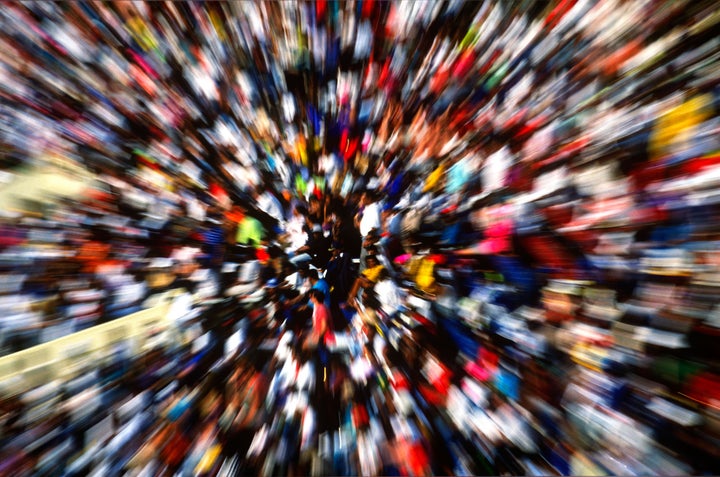
It happens, it would seem, with the regularity of the new moon. Unfortunately, every month or so a news story captures local, national, or even global attention because of the apparent indifference of a crowd of people. This week it's the very sad story of a toddler at a market in China who was gravely injured by a hit-and-run driver (actually, multiple drivers), then lay bleeding in the street while passersby took no action.
As often happens in cases like these (whether the 1964 murder of Kitty Genovese in Queens, N.Y. or the 1993 abduction and torture of young James Bulger outside Liverpool, England) the accusations and recriminations quickly started to fly. What's the matter with Chinese society?, asked one line of questioning. Others pointed a finger more broadly, suggesting that this is yet another example of the continued deterioration of common decency and humanity in the modern age.
Perhaps.
After all, while technology has shrunk the figurative distance between communities, many of us also live in an era in which it's easier than ever to disengage from the outside world. In today's waiting rooms, elevators, and commuter trains, you see more pairs of headphones than conversation partners, more people thumbing iPhones than making eye contact.
But the infamous Genovese case was 50 years ago. And I can cite you examples of similar instances of bystander apathy across time period and continent. There must be more to these stories than a sudden, recent shift in common decency. There's certainly a lot more to them than the personality-based conclusions we usually jump to.
For most of us who read about the tragic case in China, our reaction will be to indict these marketgoers as particularly indifferent, apathetic, and callous human beings. What's wrong with these people?, we'll ask, confident that we would have acted differently.
Again, maybe.
But it's also the case that there are specific situations that render all of us-yes, you and me included-less likely to take action and inject ourselves into the affairs of others. And one of the most noteworthy of these situations is being in a crowd. As a general rule, we're less likely to help when we're surrounded by others.
There are a variety of explanations for this tendency towards apathy in crowds:
- When in densely populated areas, we're simply less likely to notice someone in need. In busy areas, there's so much going on that any one event becomes less likely to draw our divided attention.
Just how strong is our tendency for non-intervention in crowds? Well, simply imagining being surrounded by people is enough to make us less helpful. In one creative set of studies, researchers at Princeton instructed participants to visualize themselves in a crowded movie theater. Or out to dinner with 30 friends. After answering unimportant questions like, what room temperature would they prefer in the theater, participants moved on to an ostensibly unrelated charity survey.
Having just pictured themselves in a crowd, respondents pledged smaller donations compared to participants who had earlier visualized an empty theater (or more intimate dinner for two). And in a follow-up study, the same researchers gave a new set of respondents a categorization task: Participants who earlier had imagined a crowd showed quicker reaction times to words like "unaccountable" and "exempt." You see, even being with imaginary people shapes how we think about helping.
So does this power of context to influence our helping tendencies excuse passersby who fail to assist during an emergency? Not at all. And does it even apply to the China story, in which the surveillance video fails to capture just how many people were on the scene? It's unclear.
But it does help us understand a bit better how incidents like this can occur. It prevents us from getting too confident in "bad apple" explanations or the conclusion that this would never happen in my neighborhood. And, perhaps most importantly, learning how the presence of others promotes apathy is often enough to prevent us from falling victim to this tendency in the future: When we understand how crowds can make us callous, we know too much to rest comfortably in our own inaction.
Like this post? Then check out the website for "Situations Matter: Understanding How Context Transforms Your World" (available now for pre-order). You can also follow Sam on Facebook here and on Twitter here. Book trailer video below: